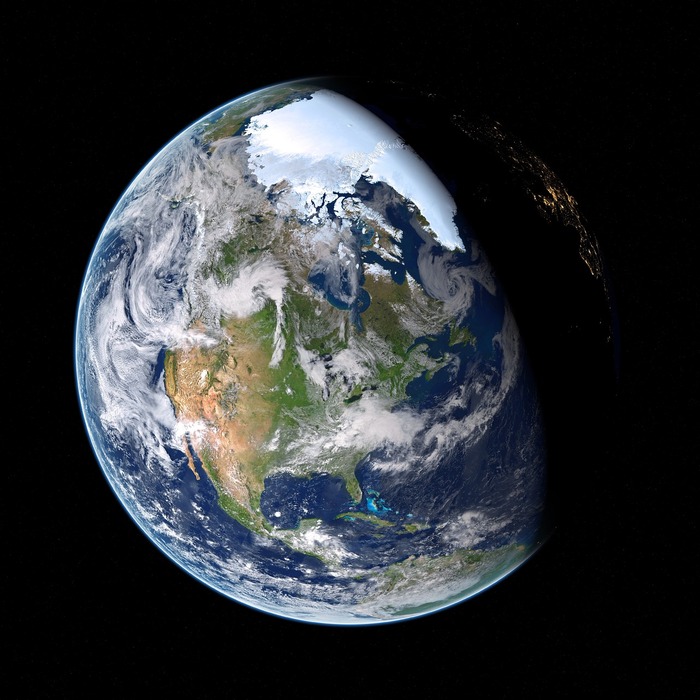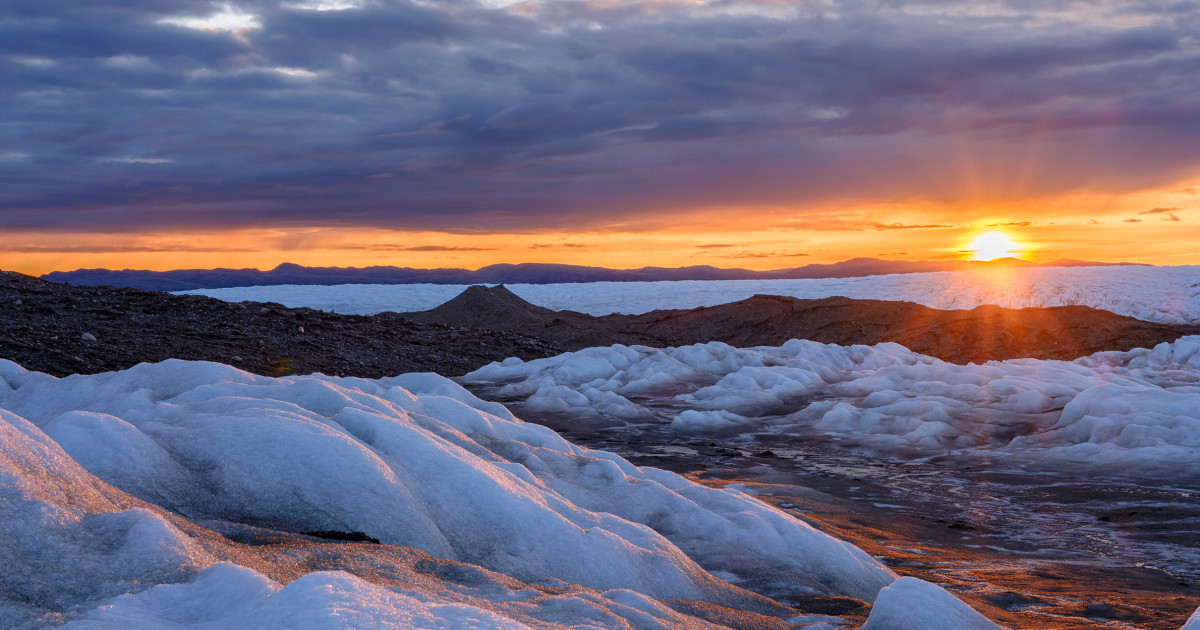Henry Fountain
08/23/2021 12:14 PM
Clarín.com
The New York Times International Weekly
Updated 08/23/2021 12:14 PM
Last Saturday, something extraordinary happened at the icy high point of the Greenland Ice Sheet, 3.2 kilometers from the sky and more than 804 kilometers above the Arctic Circle: it rained for the first time.
Rain at a research station - not just a few drops or a drizzle, but
a torrent that lasted for several hours
as temperatures rose slightly above freezing - is another worrying sign that the Arctic is in change, since it is warming faster than any other region on the planet.
The Summit research station, located three kilometers above sea level in central Greenland.
Photo Josh Haner / The New York Times.
"This is amazing because it writes a new chapter in the Greenland book," said Marco Tedesco, a researcher
at Columbia University's
Lamont-Doherty Earth Observatory
.
"This really is something new."
At the station called Summit, which is inhabited all year round under the auspices of the National Science Foundation,
there is no history
of rainfall since the observations began in the 1980s.
Also, computer simulations
don't show evidence
even from before, said Thomas Mote, a climatologist at the University of Georgia.
At Summit, conditions above freezing are almost as unusual.
Before this century, ice cores indicated that ice cores had occurred
only six times in the past 2,000 years,
Martin Stendel, a senior researcher at the Danish Meteorological Institute
,
wrote in an email.
However, temperatures above freezing have already been featured at Summit in 2012, 2019, and this year:
three times in less than ten years.
Greenland's ice sheet, which can be up to three kilometers thick and covers approximately 1,683,492 square kilometers, has been
losing more ice
and contributing more to sea level rise in recent decades as Earth shifts. It has heated up as a result of the emissions of carbon dioxide and other heat-retaining gases produced by humans.
The surface of the ice sheet increases in volume every year because the accumulation of snow is greater than the melt of the surface.
But in general, the layer loses more ice from icebergs breaking up and melting where it meets the ocean.
Over the past two decades, Greenland has lost, on average, more than
300 billion tons of ice a year.
This year is likely to be an average year when it comes to surface build-up, said Stendel, who also coordinates the
Polar Portal
, a website that disseminates the results of Danish institutes' research in the Arctic.
Heavy snowfall at the beginning of the year indicated that this might be above average in accumulation, but two warming periods in July and another in early August changed that idea by causing a widespread thaw of the surface.
The warming that accompanied the rain last Saturday also caused more than
50 percent
of the surface ice sheet to
melt
.
Mote claimed that these thaw episodes were
"isolated"
events
.
"But it seems that these events are happening with increasing frequency," he said.
"And that tells us that we are seeing real evidence of climate change in Greenland."
According to Mote, last Saturday was the first time since satellite monitoring began in 1979 that a thaw of more than half of the surface has occurred in mid-August.
Usually the largest thaw occurs in mid-July, as in 2012, when there was a gigantic thaw event.
"By the time we get to mid-August, we are almost always seeing a rapid reversal of thaw activity and a decrease in temperature," he explained.
Tedesco noted that since water flows into the ice and not into the ocean, rain at Summit would not directly contribute to sea level rise.
"But if this is happening at Summit, the effect will be
more violent
at lower elevations," he said.
"And, in fact, that ice does go into the ocean."
Tedesco called the
rain at Summit
"worrying"
because it shows that even a small warming can affect the region.
"The situation in the Arctic can change a lot with a warming of 0.278 degrees Celsius, since it can go from a frozen state to a liquid state," he explained.
"That is exactly what we are seeing."
c.2021 The New York Times Company
Look also
The Arctic's "last ice zone" is less resistant to global warming
Is the apocalypse coming?
A UN report sets a devastating scenario for the next decades













